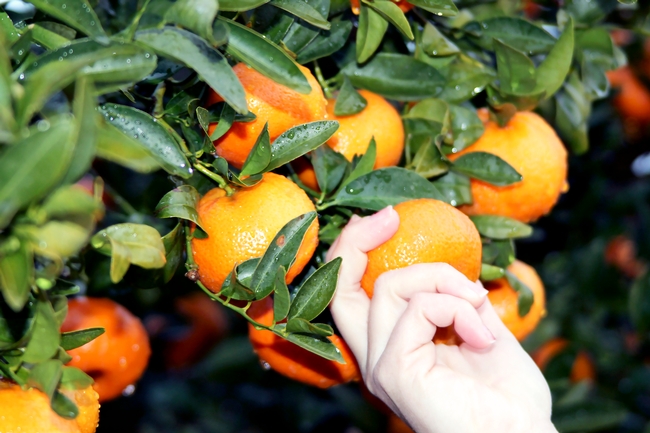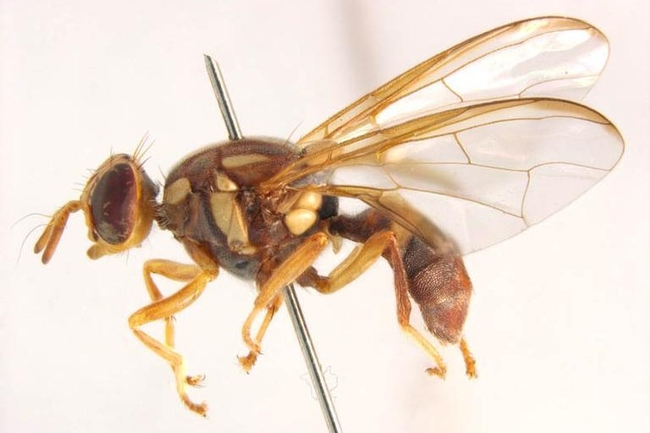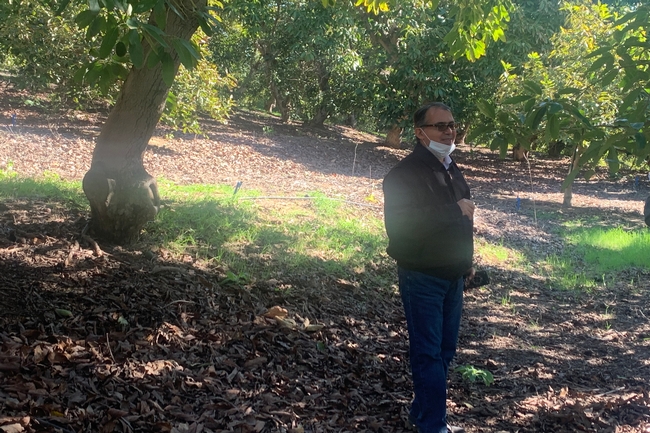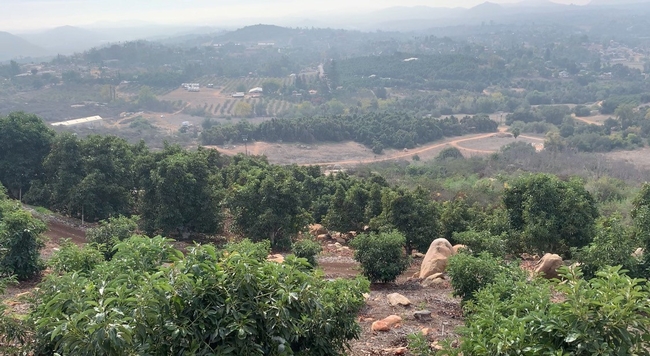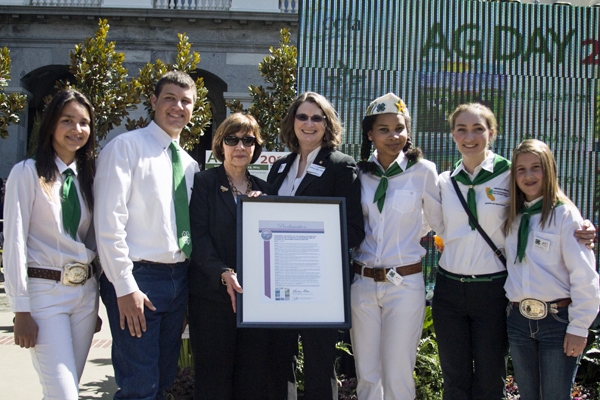Posts Tagged: CDFA
First-ever Queensland fruit fly quarantine restricts moving homegrown produce
QFF quarantine in LA, Ventura counties among seven fruit fly quarantines statewide
Residents in multiple Southern California and Northern California counties should not move homegrown fruits and vegetables from their properties to help contain several species of fruit fly that can destroy crops and impact the livelihoods of local farmers.
With sharing and gifting of food integral to the holiday season, the California Department of Food and Agriculture is reminding people to heed the seven active fruit fly quarantines aimed at controlling the Mediterranean fruit fly, Oriental fruit fly, Tau fly and Queensland fruit fly. The links below describe quarantine zone boundaries:
- Mediterranean fruit fly: Los Angeles County, Leimert Park Area
- Oriental fruit fly: San Bernardino and Riverside Counties, Redlands and Yucaipa Areas
- Oriental fruit fly: Sacramento County, Rancho Cordova Area
- Oriental fruit fly: Contra Costa County, Brentwood Area
- Oriental fruit fly: Santa Clara County, Santa Clara Area
- Tau fly: Los Angeles County – Stevenson Ranch, Valencia, Santa Clarita Areas
- Queensland fruit fly: Ventura and Los Angeles Counties, Thousand Oaks Area
People within these zones should consume or process (i.e., juice, freeze or cook) their homegrown fruits and vegetables at the place of origin and not move them off their property. Uneaten produce should be double-bagged in plastic bags and disposed of in the landfill bin – not compost or green waste.
Queensland fruit fly threatens California citrus, other crops
The Queensland fruit fly (Bactrocera tryoni) quarantine is the first of its kind in the U.S. Although QFF was first seen in California in 1985, the recent detection of two adult males triggered the unprecedented quarantine action by USDA's Animal and Plant Health Inspection Service and CDFA.
“This pest has earned a bad reputation for wreaking havoc on fruit production in Australia, where it is native,” said Hamutahl Cohen, University of California Cooperative Extension entomology advisor for Ventura County. “Adult flies lay their eggs in fruit, and the eggs hatch into larvae that then feed on the fruit, causing damage.”
And while females of other fruit fly species live for only two or three months, QFF females are unique in that they can live up to a year, according to Cohen.
“Once QFF populations take root, they're challenging to manage because females can each lay up to 100 eggs per day,” Cohen said.
In addition to being highly adaptable to a variety of environmental conditions, QFF has more than 170 host plants – including a wide range of California commodities such as citrus, grape, strawberry, fig, avocado, apricot, peach, cherry, nectarine, plum, pear, apple, tomato and sweet pepper.
The threat to citrus is especially concerning, as Southern California growers continue to grapple with the specter of spreading huanglongbing (HLB) disease, which kills citrus trees. Cohen said residents of citrus-growing regions can do their part to help their neighbors and local economy by respecting quarantine restrictions.
“Growers are already dealing with other invasive species like Asian citrus psyllid [vector of HLB pathogen], so we as homeowners need to prevent the spread of fruit flies to reduce the burden on them,” she explained.
While a spike this year in the detections of multiple fruit fly species was likely caused by a host of factors, Cohen speculates that increased post-pandemic travel is helping to move the flies. And with holiday travel in full swing, she said it's important to practice “Don't Pack a Pest” principles.
“Invasive species often hitchhike on fruits and vegetables brought into California by travelers – that's why we often first find invasive species in urban and suburban backyards, and not on farms,” Cohen said. “Travelers entering the U.S. can visit dontpackapest.com to learn about which products they can and cannot bring back with them.”
To report a suspected infestation of fruit fly larvae in homegrown produce, call the CDFA pest hotline at 1-800-491-1899. Growers with questions and concerns are urged to contact their local agricultural commissioner's office.
Avocado growers to get irrigation tools, strategies from UC ANR’s Montazar
CDFA grant supports research to optimize water use for iconic California crop
California growers, who account for more than 90% of avocado production in the U.S., will soon be getting some help in weathering the extreme fluctuations of climate change.
Ali Montazar, a University of California Cooperative Extension irrigation and water management advisor, recently received a grant to develop tools and strategies that optimize growers' irrigation practices across Southern California – the state's avocado belt. California avocados are valued at more than $411 million, according to the National Agricultural Statistics Service.
“This region faces uncertain water supplies, mandatory reductions of water use, and the rising cost of water – while efficient use of irrigation water is one of the highest conservation priorities,” Montazar said. “Water is the most critically important input to avocado production.”
At the California Avocado Commission's suggestion, Orange County was added to the study to better capture the range of climates and cropping systems across the region, Montazar said.
He hopes to develop “crop coefficients” that avocado growers can use to determine the optimal irrigation for their crop based on a host of factors: soil type and salinity, canopy features, row orientation, slopes, soil and water management practices, and more.
“Growers are unclear on how much water the crop actually needs under those conditions,” Montazar said.
He will incorporate data from the actual water use in the experimental orchards – including information from the newest soil moisture and canopy temperature sensors – to help ensure growers do not under- or overwater their crops. Overirrigating contributes to a devastating disease, avocado root rot, caused by the plant pathogen Phytophthora cinnamomi.
Another component of the grant supports outreach in disseminating these resources and best practices to the broader agricultural community.
“Developing and adopting these tools and information may have a significant impact on water quality and quantity issues and bolster the economic sustainability of avocado production not only in the well-established production region of Southern California, but also in Kern and Tulare counties where new avocado plantings are growing,” Montazar said.
Preliminary findings and recommendations are expected at the end of 2022.
CDFA honors UC Cooperative Extension centennial
The annual Ag Day at the Capitol event, held Wednesday (March 19) in Sacramento, honored the University of California Cooperative Extension for its centennial. California Department of Food and Agriculture Secretary Karen Ross presented a proclamation to Barbara Allen-Diaz, UC vice president for Agriculture and Natural Resources, who oversees UC Cooperative Extension.
“I want to commend my good friend Barbara Allen-Diaz and Cooperative Extension,” said Ross. “You help us take all that great knowledge from the UC System and extend it directly to farmers and ranchers. It is a circle of innovation that sets us apart. It is absolutely crucial to our future and I'm really happy to be here to celebrate 100 years with you.”
UC Cooperative Extension, which has offices in counties throughout California, will be holding local celebrations throughout 2014. For more information about the UCCE centennial, visit http://ucanr.edu/100.
Collaboration will help feed a hungry world
CDFA secretary Karen Ross and public relations executive Kerry Tucker suggested in an op-ed published yesterday in AgAlert that the best way to meet future international opportunities and challenges in agriculture is with a collaborative and harmonious industry.
The article included information about anticipated global demographic changes from the UC Agricultural Issues Center. According to the AIC, China will more than triple its per capita income by 2030, from $2,802 to $10,718. This kind of wealth tends to result in first-step dietary adjustments that include more consumption of meat, dairy products, fruits, vegetables and nuts.
India's numbers start smaller, from $965 per capita last year to $3,309 in 2030, but its population will continue to grow by 1 percent per year long after China's population peaks in about 2030, according to Daniel Sumner, director of the AIC. As a result, India's population will stay young and energetic for years to come, with a growth rate that could soon overtake China.
Because California farmers and ranchers are located in one of only five regions on earth capable of large-scale production of Mediterranean specialty crops, they are well positioned to prosper in the changing international marketplace.
However, say Ross and Tucker, tension between proponents of large- and small-scale production can get in the way of the cooperation required to meet the food demands of the future.
"Regardless of size or farming practices, we need a continuum of farms and ranches operating as productively as possible while protecting our precious natural resources and the environment. There is truly a place for all in California agriculture," they said.

Dan Sumner said India's population will continue to grow long after China's population peaks.
New California ag secretary has many UC ties
Gov. Brown's newly appointed secretary of agriculture, Karen Ross, brings numerous University of California connections to her new office.
An article published yesterday in California Farmer magazine says Ross is a member of:
- The Center for Cooperatives at UC Davis
- The Dean's Advisory Committee for the College of Agriculture and Environmental Science at UC Davis
- The Program Advisory Committee for the UC Sustainable Agriculture Research and Education Program
- The Board of Fellows & Visitors for Viticulture and Enology at UC Davis
Ross was designated ANR's delegate to the national Council for Agricultural Research, Extension, and Teaching in 2008, and served as a member of the UC President’s Advisory Commission on Agriculture and Natural Resources.
In 2007, Ross received an "Award of Distinction" from the UC Davis CAES.
"Karen is an excellent sounding board for what issues are on the minds of growers and the kinds of research and education needs that would most impact their efforts to stay competitive in what has become a global wine business,” the award announcement quoted Jim Wolpert, former chair of the Department of Viticulture and Enology. “The department wanted to recognize her for her leadership both in California and nationally."
Most recently Ross, the former president of the California Association of Winegrape Growers, has served as U.S. Agriculture Secretary Tom Vilsack's chief of staff. Some lament the fact that Ross's California connection will be lost at the federal level and believe the fallout could be aggravated by other California power losses, according to an article in the Fresno Bee.
But state ag leaders support the appointment, said the California Farmer article.
"Karen Ross is well-suited for the role of food and agriculture secretary. She has firsthand knowledge about the many challenges farmers and ranchers face each day, not just in California but throughout the nation," the story quotes Paul Wenger, California Farm Bureau Federation president.
Rich Rominger, CDFA Secretary under then-Governor Brown from 1977 to 1982, said Gov. Brown selected the best person for the job.
"Karen Ross is the leader we need to address the critical issues of agriculture, water, clean energy development and climate change," Rominger is quoted.
Ross's appointment must be confirmed by the California State Senate.
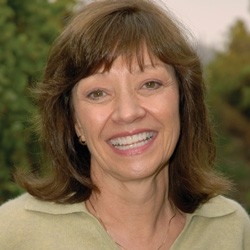
Karen Ross

